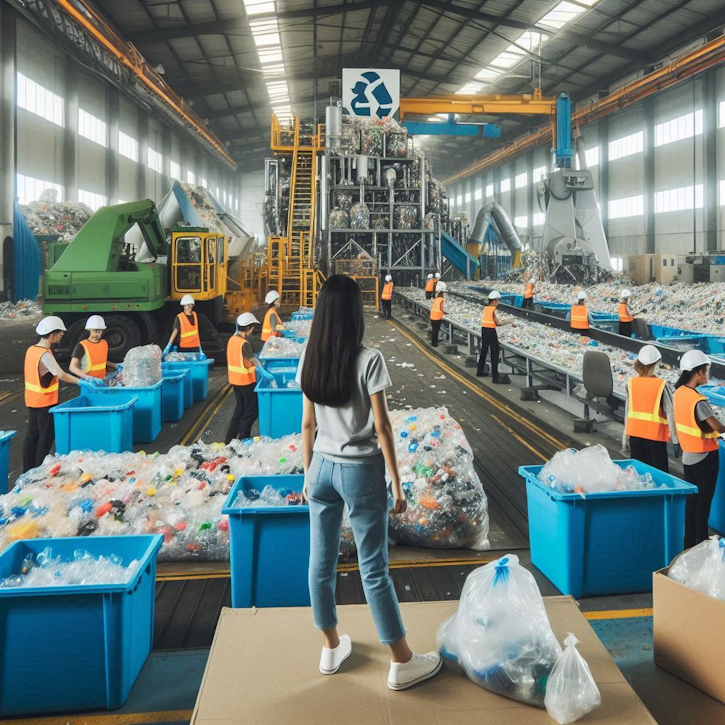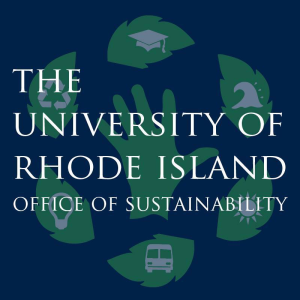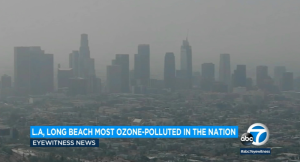
New technology powered by artificial intelligence allows for the separation of transparent polyethylene terephthalate (PET) from white PET.
Artificial intelligence improves the purity of plastic stocks leaving sorting centers. A plant in Baton Rouge, LA has reduced by a factor of three the contamination of the flakes it sells to recyclers. Using a dumpster rental company, these higher quality materials end-up getting used in local factories instead of filling the landfills of Louisiana.
Recycling Essentials
65.5% of household packaging is recycled in a closed loop (from bottle to bottle) or an open loop (from bottle to another product). Yet, only 24.5% of the 4 billion pieces of plastic packaging sold in Louisiana were recycled in 2022.
Infrared cameras that detect the composition of plastics on sorting center lines are not enough. To refine sorting, visual inspection is essential; this function, currently performed by agents, is being automated. In Baton Rouge a plant has been testing image processing software for two years. It works before plastic shredding to identify different objects and separate them according to their uses, and after shredding to separate flakes according to their color or opacity.
The goal: to increase the quantity of recycled plastic
In 2022, only 24.5% of the 4 billion pieces of plastic packaging sold in Louisiana were recycled, according to a report by the EPA published in 2024.
This figure is low compared to other waste products, such as steel or glass, which achieve a recycling rate of over 85%. The reason for this discrepancy?
First, the multiplicity of materials and shapes. We commonly talk about plastic without distinguishing between polyethylene terephthalate (PET), high-density polyethylene (HDPE), low-density polyethylene (LDPE), or polypropylene (PP) (respectively 1, 2, 4, and 5 on the small triangles symbolizing recycling, seen on packaging), or even other resins.
Similarly, transparent food bottles must follow a different process than opaque bottles and those containing household products. Recycling then requires a minimum quality to be effective. Conversely, a plastic is considered virgin when it contains less than five particles per million (ppm) of impurities. That is, a purity of 99.9995%.
Purity multiplied by three
In Baton Rouge, at the regeneration unit, the plastic packaging bags arriving from the sorting centers are closer to 97% purity, or 30,000 ppm.
The site aims to improve its quality and increase the quantities that can be reused in new packaging. Forty thousand tons of plastic leave the plant each year. Without artificial intelligence, the sorting process can achieve only 600 ppm. With image recognition, they can separate opaque PET from transparent ones and achieve less than 200 ppm of impurities.
The new tool simply takes the form of a camera perched above the sorting line. Its uniqueness actually comes from the software component, the artificial intelligence it contains. This is a deep learning technology, meaning that the machine itself chooses how to make these decisions. They don’t know exactly how the choices are made, but that’s not important when judging its effectiveness. In these technologies, the crucial period is training the machine on a corpus dedicated to its use. In other words, showing the machine thousands of sorting images and manually describing the objects one by one.
Building this database takes an enormous amount of time. It is necessary to create an image bank and then perform labeling, or the systematic labeling of all the objects on the screen. It is only from this detail that the machine can learn. For this AI, which is capable of doing everything you can do with your eyes on a sorting machine, it takes eighteen months of work.
After its training, the machine is ready to sort. A first camera is instructed to keep only the bottles. This is the big advantage over near-infrared sensors. The AI focuses on the shape of the object. Even if you have a jacket or a film made of the same material as the bottles, the machine won’t select them.
Further on, a second camera refines the selected bottles. Overall, the site has four cameras upstream of the crushing process. The complementarity between image recognition and infrared sorting opens the door to new recycling channels.
Polypropylene from household products could be reused if it were separated from food trays, particularly butter trays, into the same material, but too greasy to be used in the production of new household packaging.
Widespread rollout in sight
Image recognition experiments don’t stop at the sorting plant gate. The heart of the matter is waste recognition, explains the Director of Studies and Experiments at the city of Baton Rouge. On collection trucks, for example, this technology can observe the contents of bins and identify areas where sorting is not being respected, in order to launch educational initiatives.
They are seeking to support the development of this type of new technology. The company offers a system capable of identifying the materials and composition of waste throughout the sorting process, before using dumpster rental services. This system is already in use in Louisiana, but needs to be adapted to the entire sorting sector.
A startup also received support in 2020 for a monitoring project at the end of sorting centers. The idea is always to feed automatic dashboards to gain a more detailed analysis of sorting rejects and reduce the loss of recyclable products.
According to the EPA, sorting rejects, i.e., items excluded from the sorting chain in favor of recycling, still represent 20 to 25% of the total volume. AI could play a role in reducing this figure, but junk disposal experts remain cautious: we support solutions so that they benefit the entire sector. But the goal isn’t AI, it’s sorting.
Don’t confuse AI
Behind artificial intelligence (AI) lie very different realities that are easily confused.
Before 2022, we mainly talked about AI that automates tasks. This AI, which includes image recognition, is described by the first stage as a unique opportunity to deautomate human labor. The promise is to free workers to focus on higher value-added tasks, or more philosophically, on those that make us human. But since 2023, AI has also become generative. ChatGPT, Midjourney, and other Mistrals are tackling non-repetitive high-level cognitive tasks. It’s no longer about automation but about creation. And that has nothing to do with it.
Image recognition uses so-called deep artificial intelligence. This means that the machine’s decision path is unknown. By repeatedly showing it images in which each object has been labeled, the machine itself determines the best way to analyze similar images.




